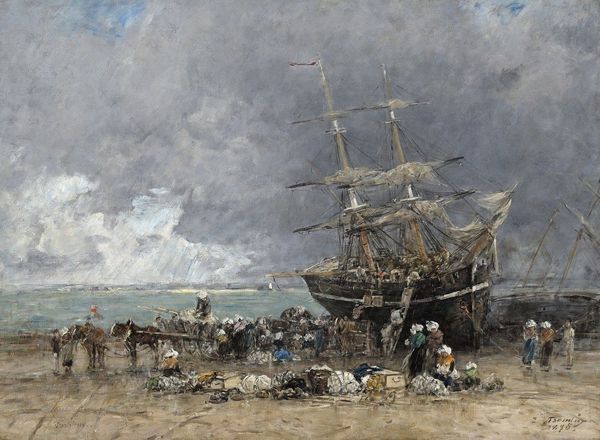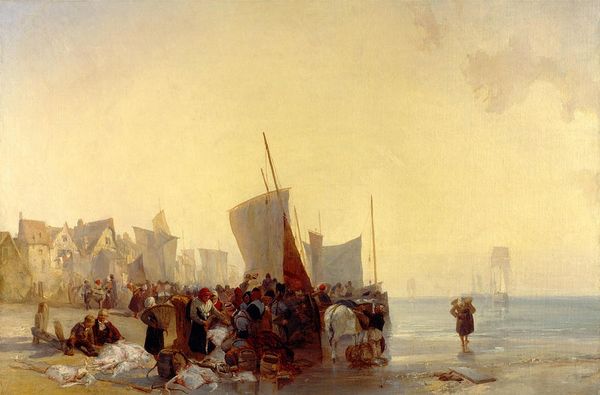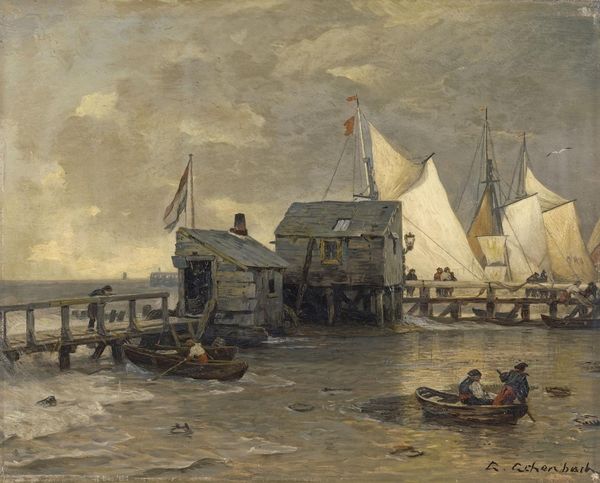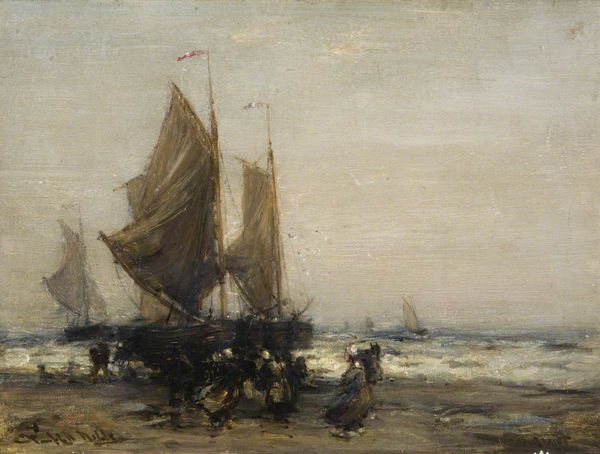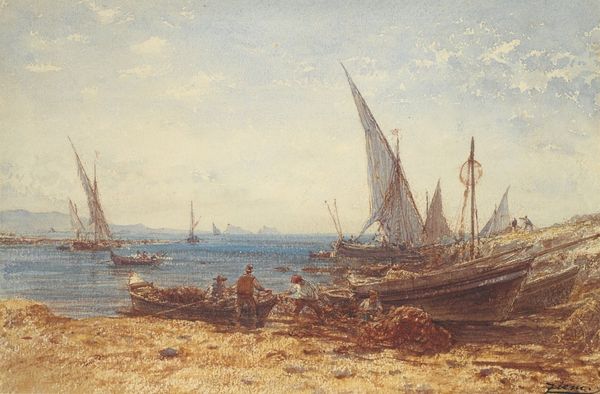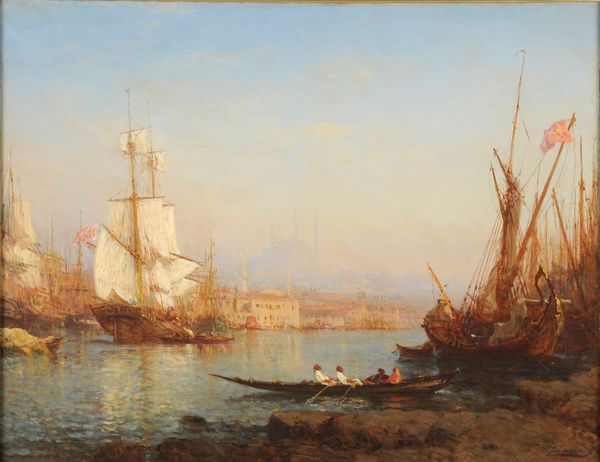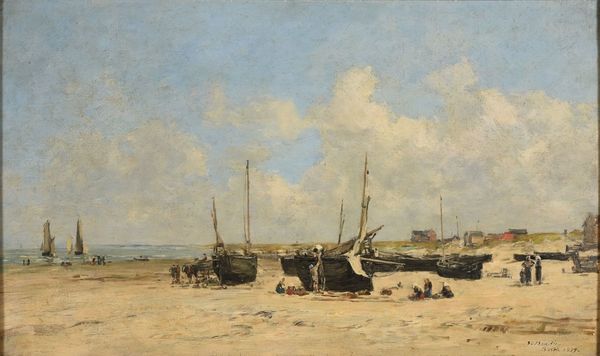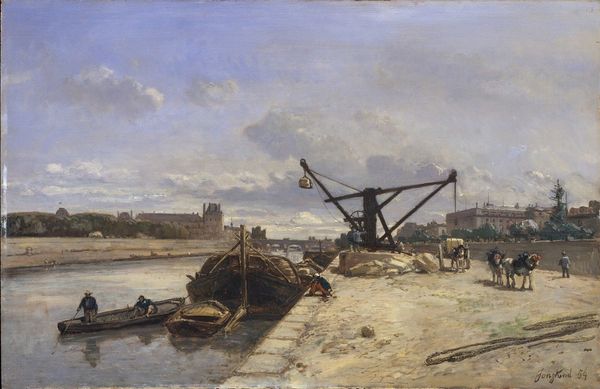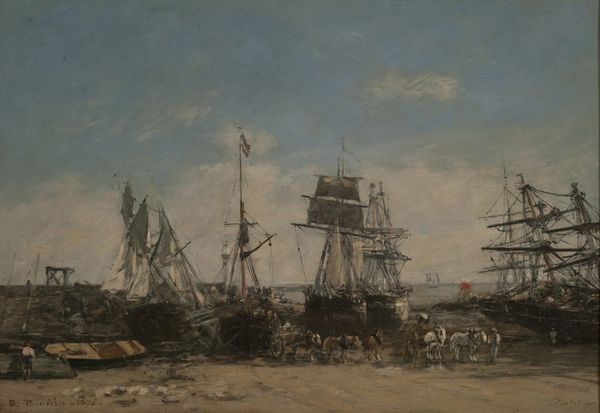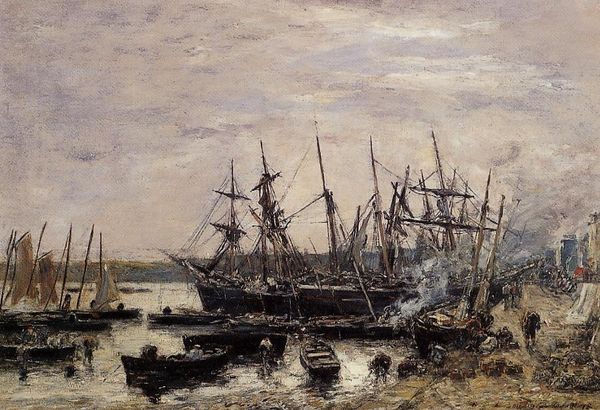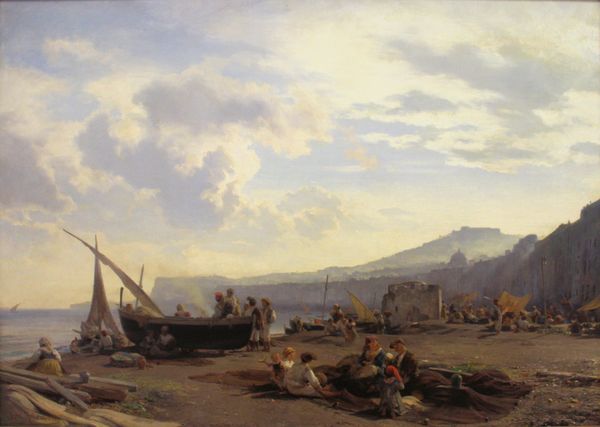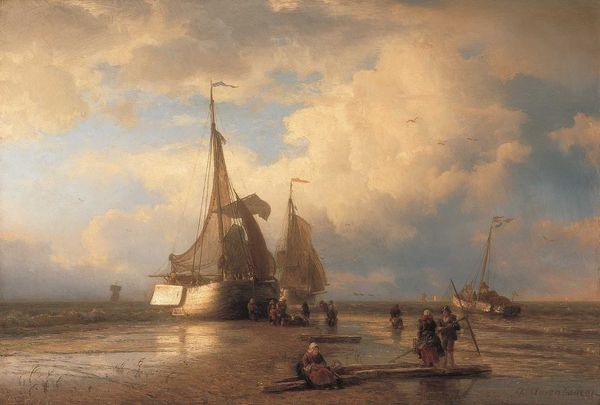
Copyright: Public domain
Editor: Here we have Andreas Achenbach’s "Fish Market in Ostend," painted in 1876. The scene is busy and a bit chaotic, full of people and boats under a hazy sky. What do you see in this painting, especially considering the time it was made? Curator: I see a snapshot of a specific socio-economic ecosystem, right? This isn't just a picturesque scene; it's a document of labor and commerce at a particular moment in Ostend's history. Think about it: Achenbach painted this during a period of intense industrialization and urbanization. Editor: So, how does that broader context inform our understanding of the painting? Curator: Well, the painting invites us to consider the lives of these market workers and their families. It acknowledges their existence, their daily struggle, in contrast to the rising bourgeoisie. It portrays working-class people as essential contributors to society. What does this painting communicate about their working conditions, and how do those conditions affect their social identity and position within Ostend society? Editor: It makes me think about the unseen labor that goes into the food on our plates. Curator: Exactly. Consider the male gaze. Achenbach may be portraying these scenes in a sympathetic way, but there could still be issues of romanticizing or exoticizing working class struggles. We should reflect critically and examine our own perceptions and attitudes, too. Does the art perpetuate harmful sterotypes? Editor: It’s more than just a pretty picture then, isn’t it? Thanks! Curator: My pleasure! It's crucial we continually engage with these historical narratives and consider them through the lens of modern societal issues.
Comments
No comments
Be the first to comment and join the conversation on the ultimate creative platform.

